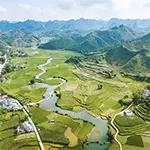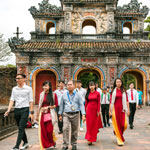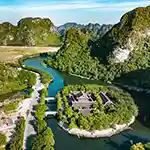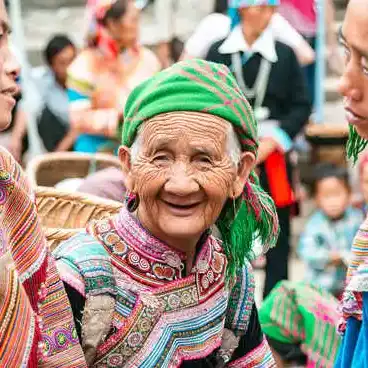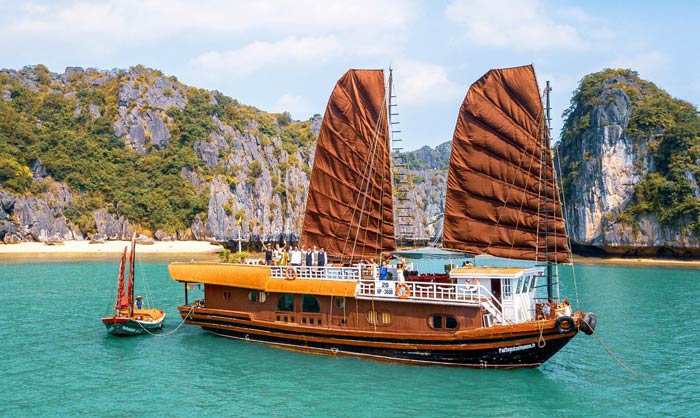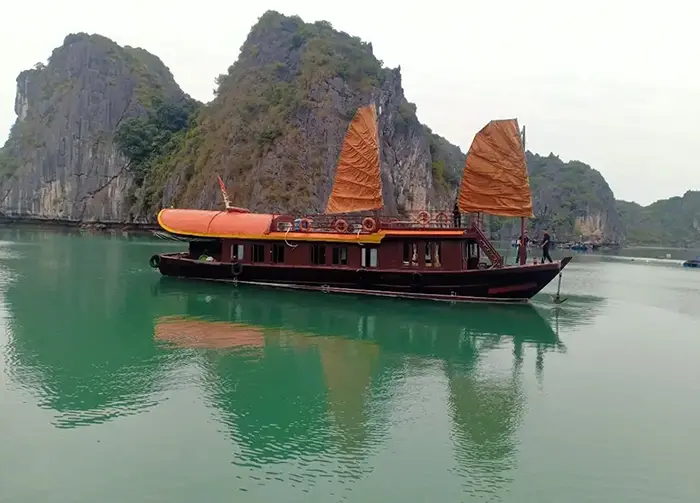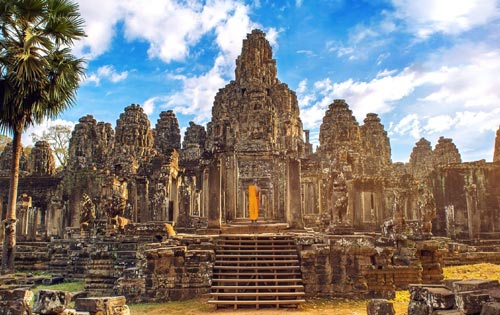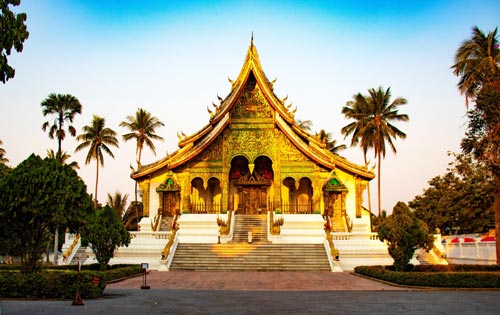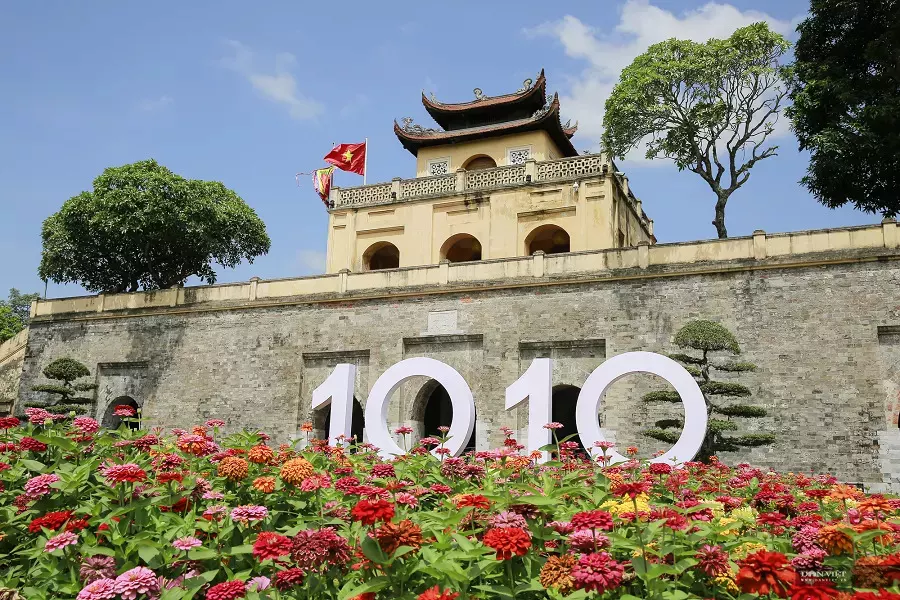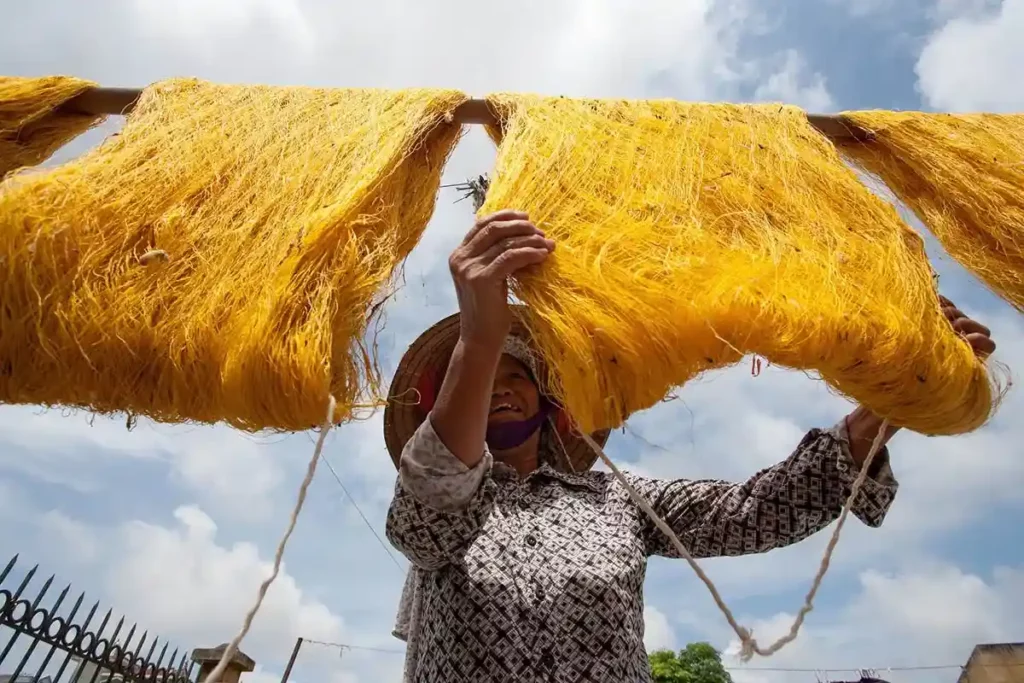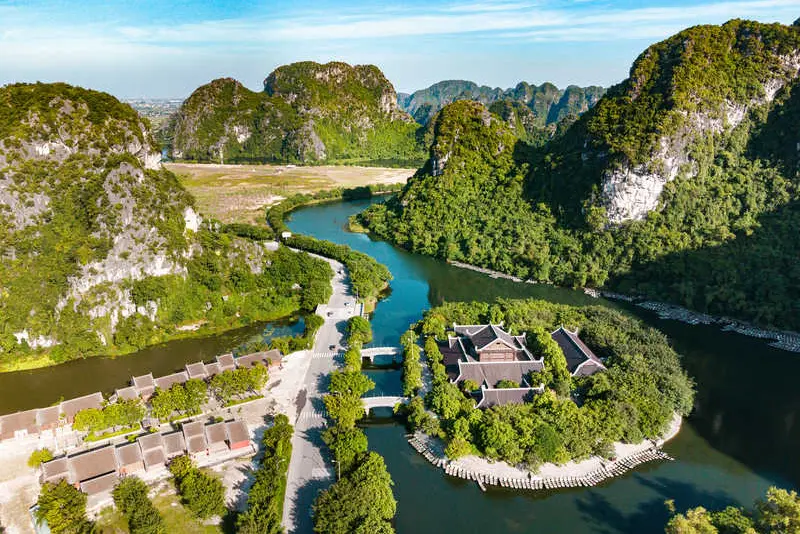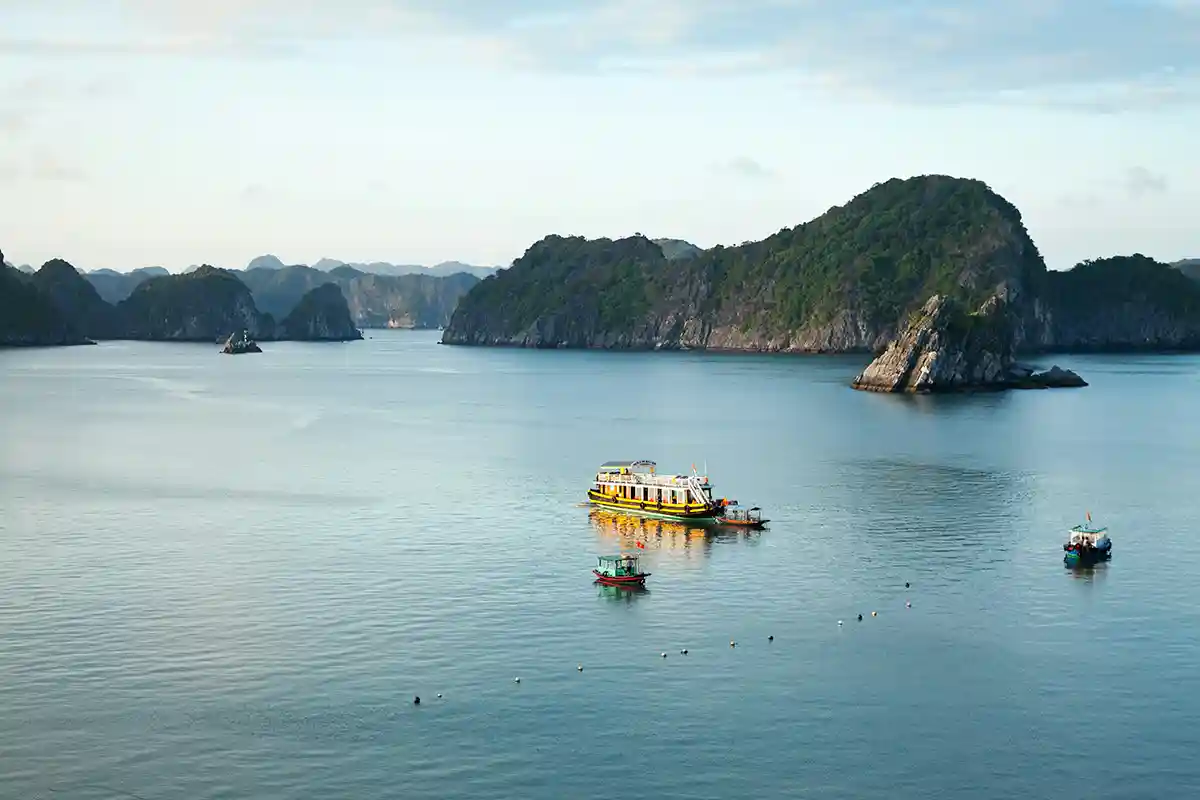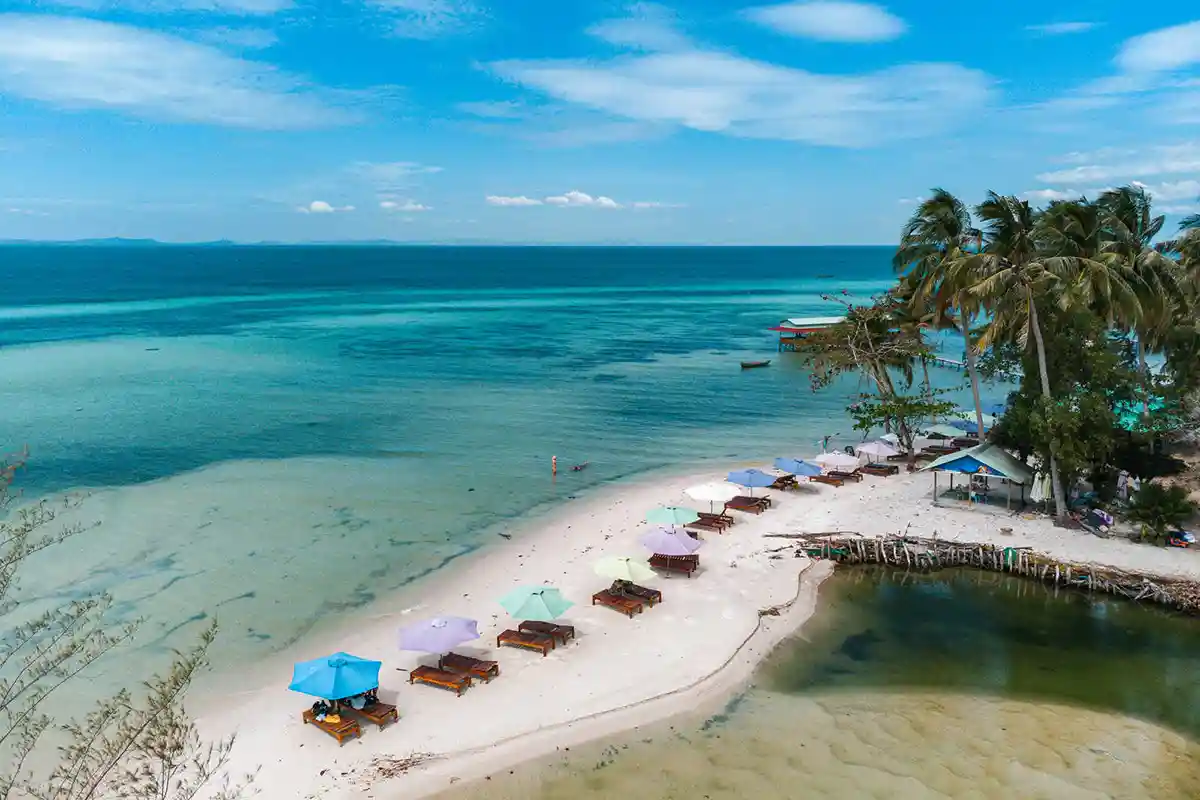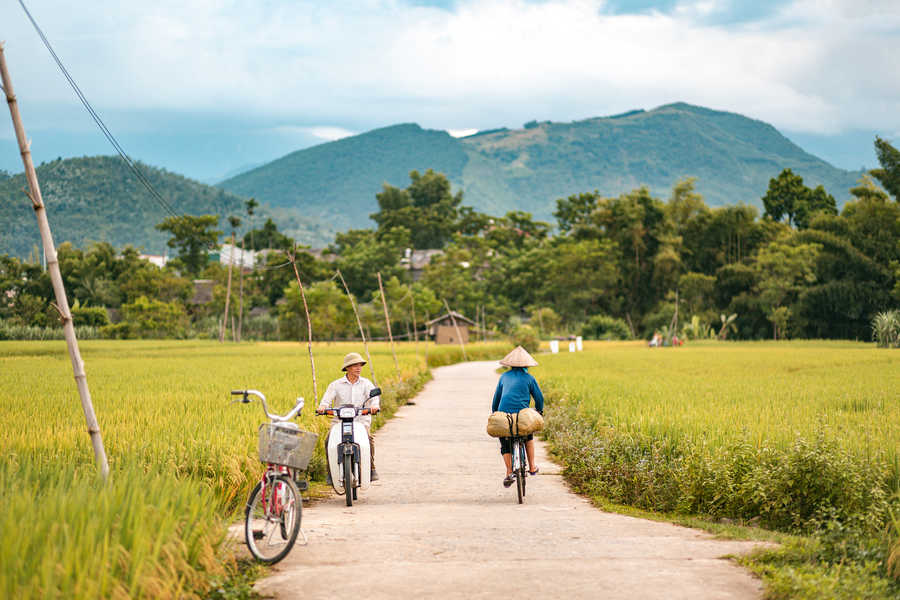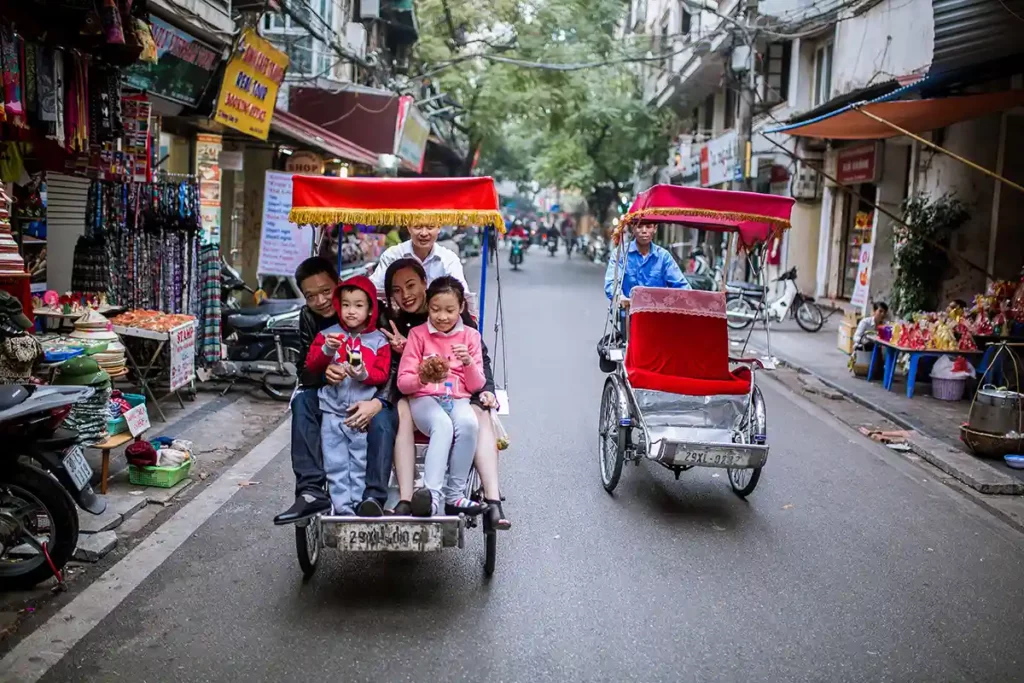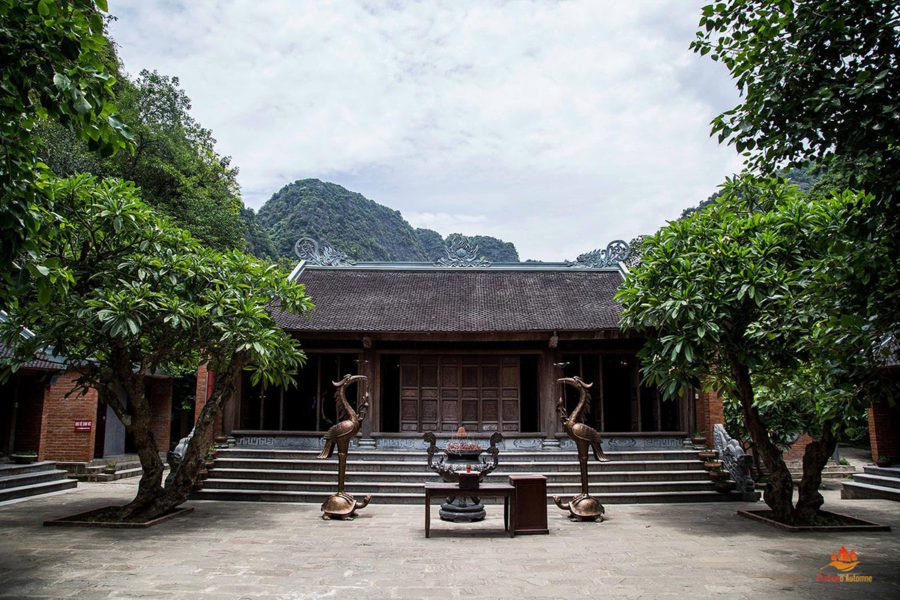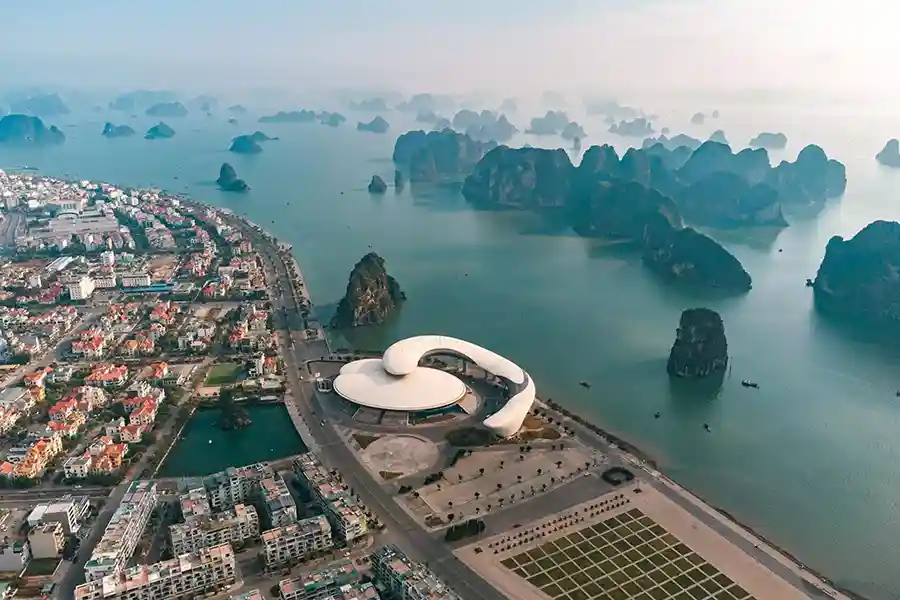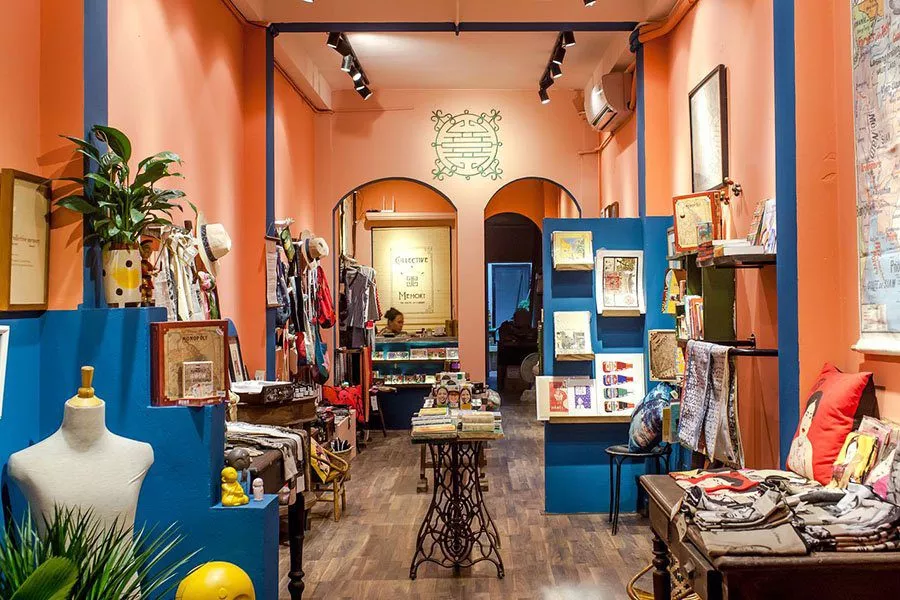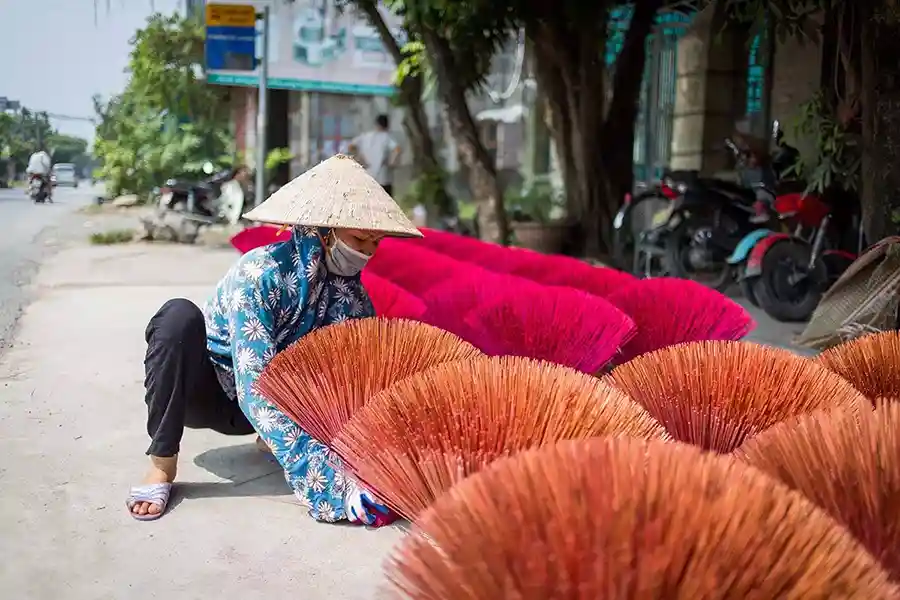Hanoi, the enchanting capital of Vietnam, is a city steeped in history, where ancient traditions blend seamlessly with modern aspirations. The history of Hanoi unfolds through its labyrinthine streets, each corner telling tales of a city that has witnessed the rise and fall of empires, fought for independence, and flourished into a rich cultural hub. To truly appreciate the depth of this remarkable city, understanding the history of Hanoi is essential. What are the key historical events that have shaped Hanoi into the vibrant metropolis it is today? Below are 10 pivotal moments in Hanoi’s historical and cultural development.
3rd Century BCE: The dawn of Co Loa capital citadel
In the 3rd century BCE, the Kingdom of Au Lac constructed the Co Loa Capital Citadel which are still traces in the suburbs of Hanoi today. This ancient fortress, with its unique spiral-shaped design, stretched over an area of 500 hectares. The citadel’s walls, built from compacted earth and stone, reached heights of up to 8 meters and had a circumference of nearly 8 kilometers.
Co Loa’s significance lies in its reflection of early power centralization and the emergence of a sophisticated Vietnamese civilization. Its construction required advanced labor organization and engineering, showcasing a complex society. The citadel’s remnants embody the ingenuity, ambition, and resilience that shaped the spirit of Hanoi and Vietnam.
Today, visitors can explore the archaeological site, marveling at the intricacy of the spiral-shaped citadel and pondering the mysteries of a civilization that flourished over two millennia ago. The nearby museum offers insights into the artifacts discovered here, providing a tangible link to this distant era.
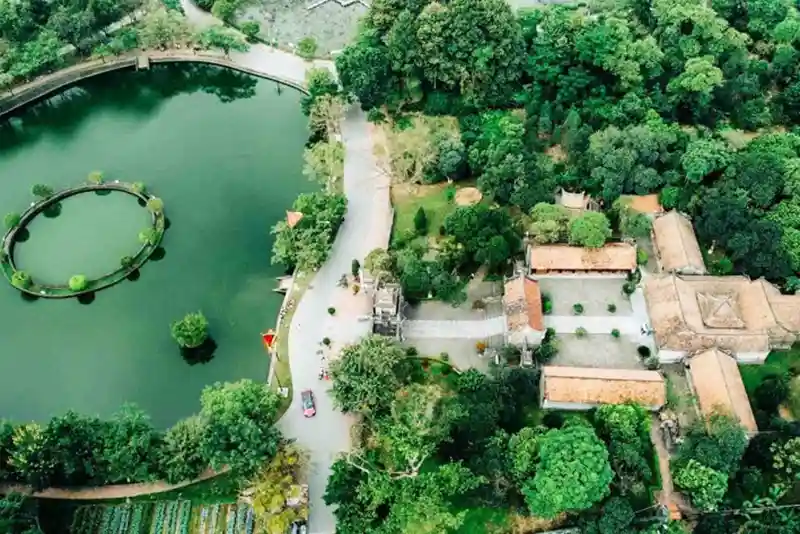
A shot of Co Loa Citadel from above
1010 : The birth of Thang Long
Fast forward through the centuries to a pivotal moment in Vietnamese history: in 1010 CE, Emperor Ly Thai To made a decision that would shape the future of the nation. He moved the capital of the newly unified Dai Viet from Ninh Binh to what is now Hanoi, inspired by a vision of a soaring dragon.
This new capital was named Thang Long, meaning “Ascending Dragon,” symbolizing the growth and prosperity the emperor envisioned. Walking through the grounds of the Imperial Citadel of Thang Long, a UNESCO World Heritage site, you can still sense the majesty and solemnity of the capital that has existed for millennia.
The citadel, with its detailed architecture and peaceful gardens, offers a tangible connection to imperial Vietnam. The artifacts, meticulously unearthed and displayed for the 1000th anniversary of Thang Long, invite you to reflect on the arduous journey of safeguarding Vietnam’s independence. Besides exploring Thang Long Imperial Citadel, you can also discover the Archaeological Museum beneath the National Assembly building provides tourists with a deeper, more nuanced perspective on Hanoi’s rich history.
1428 : Renamed to Dong Kinh
The year 1428 marked another pivotal moment in Hanoi’s history . Fresh from victory against foreign invaders, King Le Loi renamed the city Dong Kinh, or “Eastern Capital.” This name would endure for over the next three centuries, a period during which the city blossomed into a cultural and economic powerhouse of Southeast Asia.
Under the Lê Dynasty, Đông Kinh flourished as a center of commerce and craftsmanship. The city’s layout was restructured, with new palaces, temples, and markets built to accommodate its growing population and importance. The Royal Court was expanded, becoming a hub of political power and cultural refinement.
It was during this time that Western traders, stumbling over the pronunciation, would dub the region “Tonkin”, a name that would come to represent the entire northern region of Vietnam in the future. As you explore the Old Quarter, with its 36 streets named after the guilds that once thrived there, you’re walking through the living legacy of Dong Kinh.
As Dong Kinh grew in prominence, it attracted scholars, artists, and traders from across the region. The city became a melting pot of ideas and cultures, fostering innovation and creativity. This cosmopolitan atmosphere laid the groundwork for Hanoi’s enduring role as a center of Vietnamese culture and intellect.
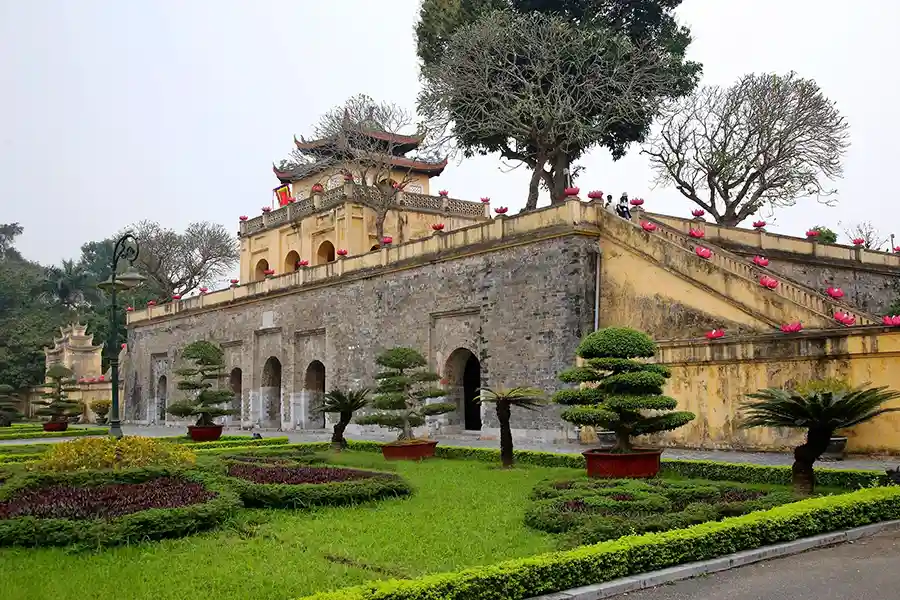
Doan Mon relic was reconstructed under the Le dynasty based on the Ly dynasty construction.
1802 : The origin of the name “Hanoi”
At the start of the 19th century, Vietnam’s political landscape shifted with the rise of the Nguyen dynasty, which unified the country and moved the national capital to Hue. This decision marked a turning point in Vietnamese history, reshaping the roles of key cities. Despite losing its capital status, Hanoi remained a vital regional hub for administration and culture. The Nguyen rulers understood its strategic importance with the economy and appointed capable officials to ensure the city’s continued prosperity and influence.
In 1831, Emperor Minh Mang renamed the city Hanoi, meaning “the city within rivers”. This name wasn’t just geographically; it symbolized Hanoi’s enduring identity and the importance of the Red River and its tributaries to the region’s culture, economy, and defense. The renaming also reflected a new vision for the city within the Nguyễn empire.
During this time, Hanoi began to undergo significant changes. The Nguyen administration launched several infrastructure projects, such as strengthening flood defenses and building new administrative structures. These efforts paved the way for future urban development and modernization. The early 19th century also saw the beginnings of increased Western influence, with European traders and missionaries gradually establishing a presence. Although French colonial rule was still in the future, this early influx of foreign ideas and technology would have a lasting impact on the city’s evolution.
November 20, 1873: The battle of Hanoi
In November 1873, the Battle of Hanoi led to the city’s fall under French colonial rule. This event marked the beginning of a period that reshaped Hanoi’s urban landscape and cultural identity. By 1902, Hanoi was established as the capital of French Indochina, introducing Western architecture and modern urban planning. As a result, wide boulevards and modern designs sharply contrasted with Hanoi’s traditional Vietnamese layout.
The colonial era changed Hanoi’s social and economic structures. French became the language of administration, and a new class of Vietnamese elites educated in French schools emerged. Technologies like electricity, telecommunications, and railways modernized the city.
However, the colonial period was also marked by resistance and the seeds of nationalism. Hanoi became a center for Vietnamese intellectual and political awakening. The city saw the emergence of newspapers and literary societies that promoted Vietnamese culture and language, often operating clandestinely to avoid colonial censorship. These movements would later play a crucial role in the struggle for independence.
September 2, 1945: Declaration of independence of the Democratic Republic of Vietnam
As the world emerged from the shadow of World War II, Hanoi stood at the threshold of a new era. On September 2, 1945, the air in Ba Dinh Square crackled with anticipation as crowds gathered to hear President Ho Chi Minh proclaim Vietnam’s independence from France.
This historic moment, echoing the words of the American Declaration of Independence, marked the birth of the Democratic Republic of Vietnam and solidified Hanoi’s role as the heart of a newly liberated nation. Today, Ba Dinh Square remains a place of profound national significance.
Visitors to Hanoi can pay their respects at the Ho Chi Minh Mausoleum, a monumental tribute to the revolutionary leader. The nearby Ho Chi Minh Museum also offers insights into the life of the man who led Vietnam to independence.
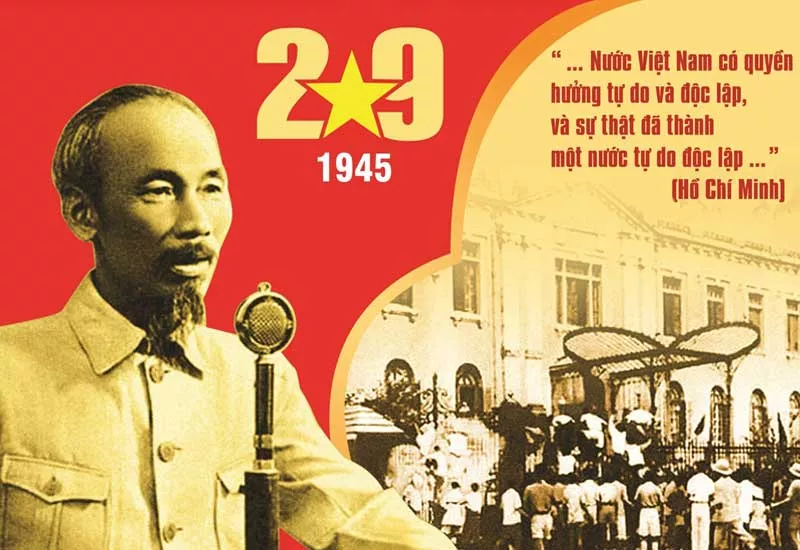
President Ho Chi Minh reads the Declaration of Independence at Ba Dinh Square
October 10, 1954: The liberation of the capital city
On October 10, 1954, Hanoi celebrated a historic moment with the end of nearly a decade of war against France and the liberation of the city from colonial rule. On that day, French troops withdrew, marking the culmination of the First Indochina War, as the Vietnamese army triumphantly entered Hanoi.
This event marked the beginning of a new era for Hanoi, which once again became the capital of a fully sovereign nation after decades of colonization. The liberation of Hanoi symbolized not only a military victory but also the resilience and determination of the Vietnamese people to reclaim their independence.
October 10 remains a significant date in Vietnam’s history, commemorating the sacrifice and courage of those who fought for freedom. Today, this day is celebrated annually as a source of national pride, representing the beginning of a new period of reconstruction and peace for the country.
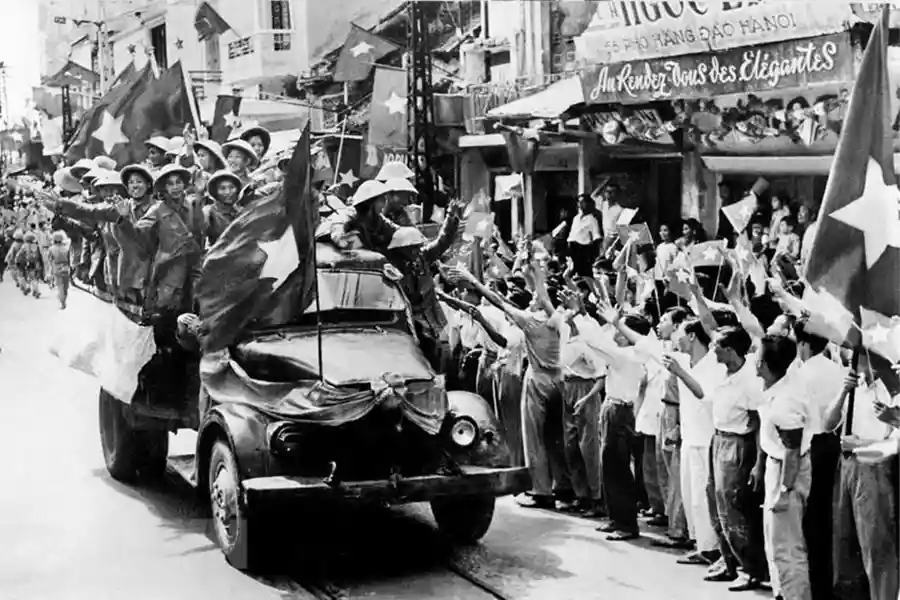
The victorious army returned to Hanoi on October 10, 1954
July 2, 1976: Reaffirmation of Hanoi as the capital of Vietnam
The summer of 1976 marked a moment of unification for Vietnam. On July 2, Hanoi was officially declared the capital of the reunified Socialist Republic of Vietnam. This declaration was a testament to the nation’s enduring spirit after years of conflict and struggle.
This proclamation ushered in a new era of rebuilding and reconciliation. Hanoi, bearing the scars of war but unbowed, stood as a symbol of national unity and hope for the future. In 1999, this spirit of resilience and peace was recognized internationally when UNESCO designated Hanoi as a “City for Peace.”
Hanoi’s position was further solidified many years later. The capital was chosen as the location for the historic meeting between the heads of state of the USA and North Korea: Donald Trump and Kim Jong Un.
August 1, 2008: Expansion plan of the capital city
As the 21st century unfolded, the importance of expanding Hanoi’s administrative boundaries became clear. On August 1, 2008, the city incorporated Ha Tay province and parts of neighboring regions. This expansion was crucial for establishing the city as a dynamic economic hub.
The integration of Ha Tay brought both challenges and opportunities, requiring a balance between development and cultural preservation. Places like the Perfume Pagoda, a Buddhist temple complex in Huong Tich Mountain, are now easily accessible from Hanoi. This site showcases the combined efforts of the government and citizens to preserve cultural values and natural beauty.
Today, the expansion allows for exploration beyond the city center, where visitors can experience the scenic landscapes and traditional villages after leaving the bustling city. The subtle contrast between these two experiences, quietly, creates a harmonious balance.
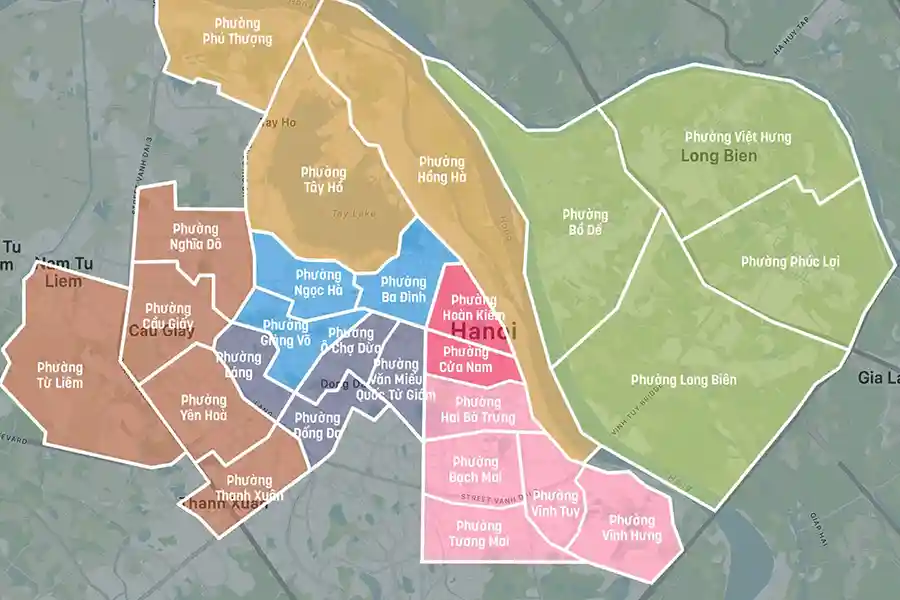
Map of Hanoi after merging with Ha Tay. Source: ScienceDirect
October 1-10, 2010: The 1000-Year Anniversary of Thang Long – Hanoi
As the calendar turned to 2010, Hanoi erupted in a joyous celebration of its millennial anniversary. For ten days, from October 1 to 10, the city became a vibrant canvas of festivities, honoring a thousand years of history, culture, and resilience.
This grand commemoration brought together citizens and dignitaries from around the world. It showcased Hanoi’s rich cultural tapestry through traditional performances, art exhibitions, and historical reenactments. The anniversary served not only as a reflection on the past but also as a bold statement of Hanoi’s vision for the future.
Visitors to Hanoi today can still feel the echoes of this celebration in the city’s vibrant arts scene, from the traditional water puppet theaters to f – a community art product recognized by Guinness as the longest ceramic painting in the world. The Hanoi Museum, inaugurated during the millennial celebrations, offers a comprehensive journey through the city’s history and is a must-visit for those seeking to understand the depth of Hanoi’s cultural heritage.
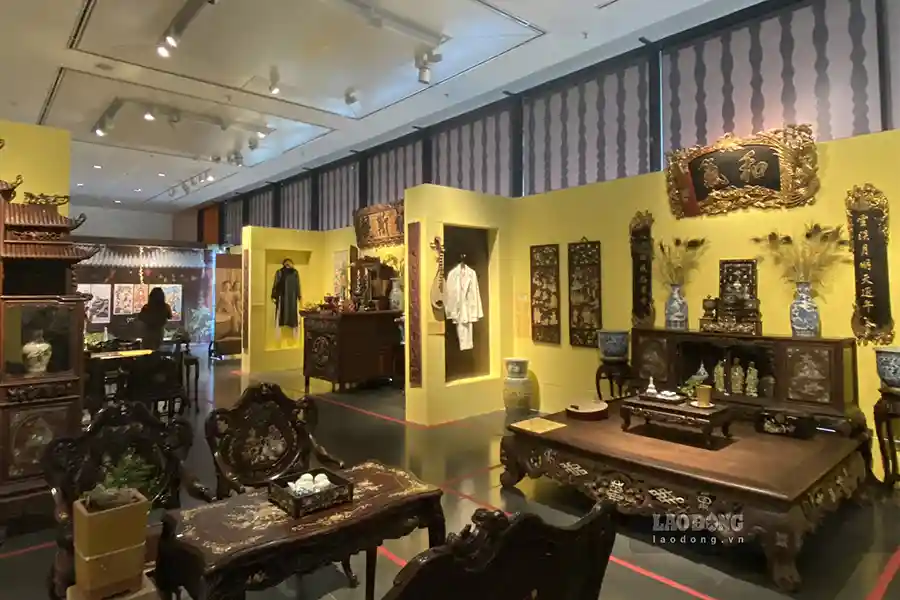
The exhibition “Nep xua” in Hanoi Museum (2022). Source: Mekong Asean
Hanoi: A city of contrasts
Hanoi, the capital of Vietnam, is a living testament to the nation’s resilience and rich heritage. From its ancient citadels to its bustling modern streets, the city embodies a beautiful contrast of tradition and modernity. As you explore the historical landmarks, savor authentic pho, and immerse yourself in the vibrant local culture, you will discover why Hanoi is not just a destination but a journey through time.
Don’t miss out on unique experiences like exploring ancient temples and immersing yourself in the local art scene. Book your tour today and let Hanoi’s magic captivate you here!
For further insights into Hanoi’s rich history and cultural significance, explore resources like Britannica and the Vietnam Embassy in the USA.

